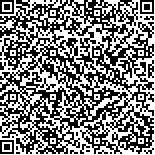下载中心
优秀审稿专家
优秀论文
相关链接
摘要

海洋雷达后向散射回波主要来自短重力波的Bragg 散射,这种散射与海面风场信息、边界层涡旋等密切相关。因此,可以从雷达散射截面反演风场信息。对1994 年4 月航天飞机成像雷达(SIR-C/X-SAR)获取的南中国海合成孔径雷达(SAR)图像进行了分析研究。利用SIR-C 数据,从SAR 图像谱提取了风向;根据CMOD4 模型,从C波段雷达后向散射系数反演风速;利用双尺度散射模型对反演的风速进行了对比分析。结果表明,从SIR-C雷达数据可以反演海面风矢量,星载SAR是提取海面风场信息的有效技术手段之一。
关键词:
SIR-C/X-SAR 风矢量 散射模型The radar backscattering from the ocean surface results mainly from the Bragg scattering caused by the short gravity waves, which are related to wind vector, boundary layer phenomena, etc. Hence, it is reasonable to retrieve the wind field information from the radar cross section of the ocean surface. Much work has been done on deriving the ocean spectra from SAR imagery and wind speed from radar cross section. In this paper, the (SIR-C)/(X-SAR)data acquired in April, 1994 are analyzed over the South China Sea. Firstly, the SAR image spectra are calculated, and the wind direction is estimated. The wind speed is derived using the sigma naught of the C band data with the CMOD4 model. The results are validated with the composite model. It is shown that SAR is one of useful tools for the retrieval of comprehensive wind information over the ocean.

